Derby's Heritage Part 12 - King Street to Friar Gate
w/e 26 December 2010
All this week's pictures were taken
with a Kodak DX6490
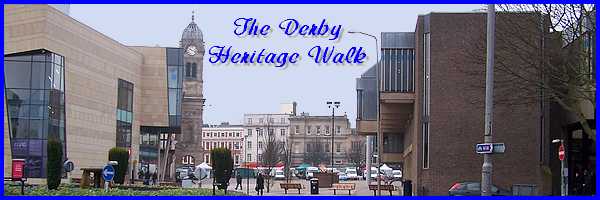
This part is one of contrasts passing through areas
of an industrial past to elegant wide open streets and we pick
up the route at the Seven Stars Inn on King Street.
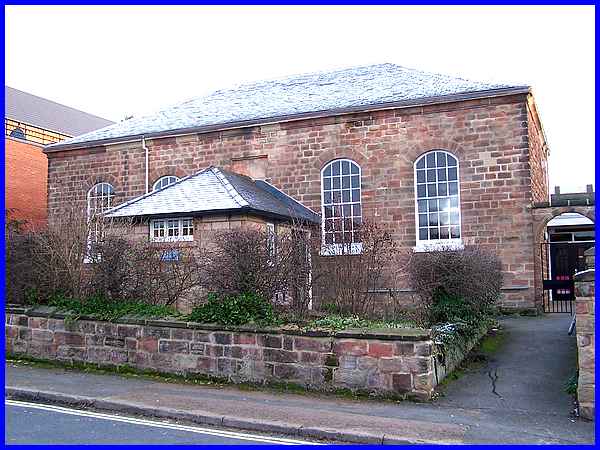
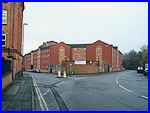 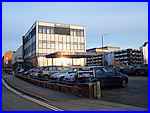 Our
first option is to pass the Seven Stars and turn into Bridge
Street keeping left by the Rykneld Mills complex into Lodge Lane
(left). The second option is to take a few steps back to St Helen's
Street to pass the Radio Derby building (right). This way we
pass the Meeting Room (above) built 1808 to a traditional Quaker
design. One of Derby's claims to fame is that it is where Quakers
were given their name. Our
first option is to pass the Seven Stars and turn into Bridge
Street keeping left by the Rykneld Mills complex into Lodge Lane
(left). The second option is to take a few steps back to St Helen's
Street to pass the Radio Derby building (right). This way we
pass the Meeting Room (above) built 1808 to a traditional Quaker
design. One of Derby's claims to fame is that it is where Quakers
were given their name.
|
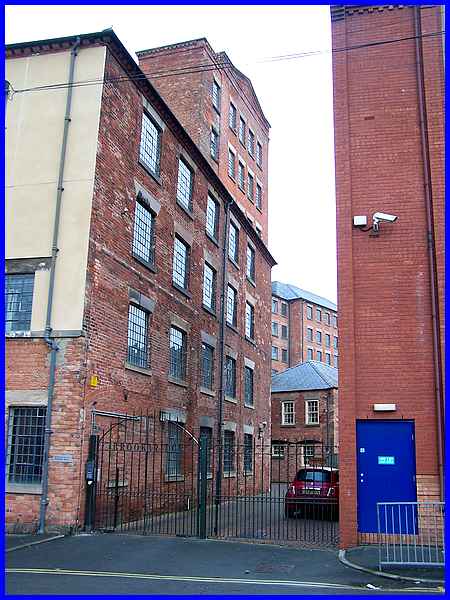
The two route options converge via Willow Row but where Willow
Road joins Lodge Lane we get our first glimpse of the seven storey
block that is part of the Rykneld Mills. The complex consists
of four mills built between 1819 and 1842 for silk manufacturers
Thomas Bridgett & Co. who became the largest silk concern
in Derby. The seven storey block is the South Mill but the mills
have now been converted into housing and seem to be occupied
mainly by the University of Derby.
|
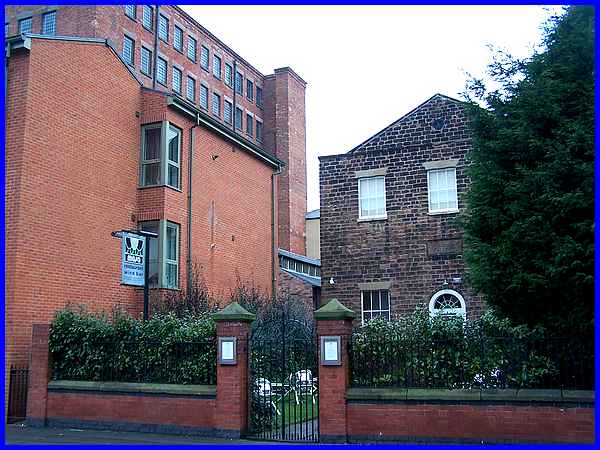
From St Helen's Street we turn into Brook Street where nestling
on a small plot of land in the shadow of the towering South Mill
and more recent extension is the former Wesleyan Chapel. The
chapel was built in 1802 as Derby's first Baptist Chapel but
was enlarged in 1815 and sold to the Wesleyan Methodists in 1856
with whom it remained until 2002 when it closed. Now Grade II
listed, the chapel has been converted to a wine bar and restaurant.
|
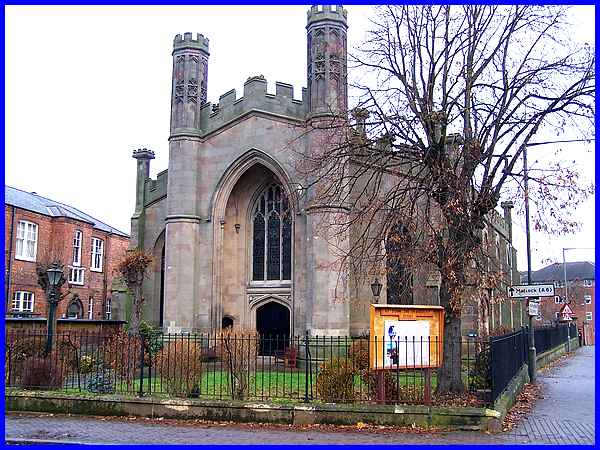
We leave Brook Street where it joins Bridge Street and continue
to Friar Lane passing on the way St John the Evangelist's Church
on the corner of Mill Street. The turreted design always reminds
me of a castle but the Grade II* listed building is the only
surviving Commissioners' Church in Derby, being consecrated in
1828, earning it the distinction of being the first 'new' church
in Derby to be consecrated since the Reformation.
|
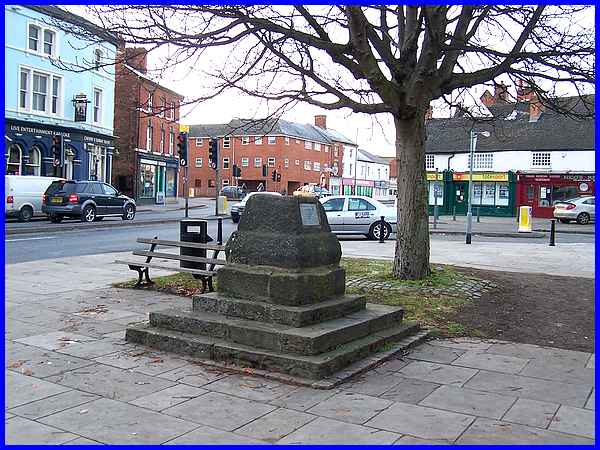
On meeting Friar Lane our route will be to the left back towards
the city centre but first we must go a short distance in the
opposite direction to view the Headless Cross. The Cross that
has a fascinating history bears a weathered and worn plaque that
is difficult to read but I believe it says the following:
"This stone once formed part of a medieval cross which
stood at the upper end of Friar Gate and was later used by the
inhabitants of Derby as a market stone during the visitation
of the plague 1665. It was removed from the Arboretum and replaced
here near its original site June 1970"
Located at the Arboretum between 1892 and 1979, the Cross has
a trough in its top in which vinegar was kept to allow money
to be disinfected during the Great Plague. There also appears
to be some dispute or confusion about the history of the cross
but there is an article on bygonederbyshire.co.uk that purports to be
the true story.
|
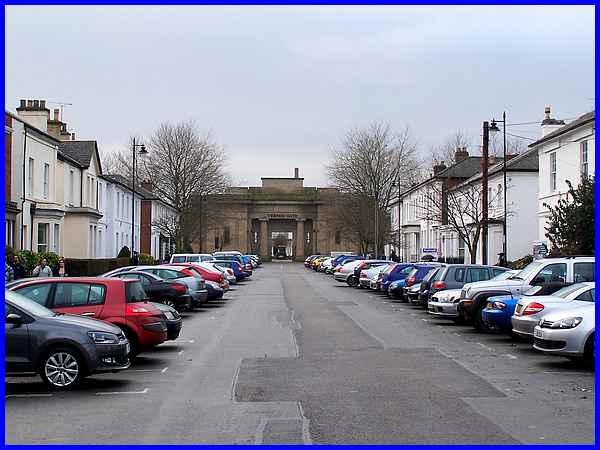
On the other side of Friar Gate is Vernon Street a wide street
lined with fine Regency villas. Some of the outdoor sequences
of the 1980s TV series "Nanny" starring Wendy Craig
which was set in London were actually filmed in Vernon Street,
Derby. At the far end of the street is the impressive façade
in the Greek Doric style of the County Gaol that opened in 1827.
Designed by Francis Goodwin, it served as the County Gaol from
1843 until 1919, when much of it was demolished but still served
as a military prison until 1929. It later became Derby's Greyhound
Stadium but fell into disrepair until it was restored in 2000
becoming a complex of offices and apartments leaving only the
imposing front façade of the former prison.
|
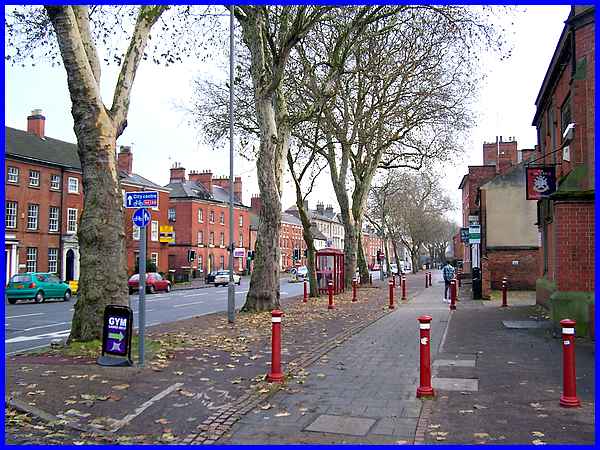
From the end of Vernon Street, this is the view along Friar Gate
towards the city centre. I have often driven along here (part
of it is one way) but it is difficult to see the properties when
travelling at speed and it is only on foot that the true elegance
of the street can be appreciated. Each of the buildings must
have a story to tell but we shall only sample a few in passing.
|
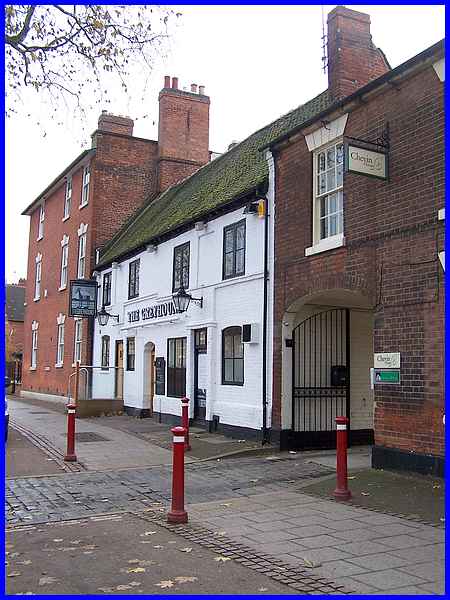
One such building is The Greyhound pub. This too, like many in
this area, is a Grade II listed building and was built in 1734.
I thought the name may have been because of its proximity to
the former stadium but as it predates 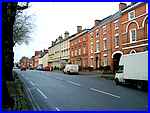 the stadium by a couple of hundred years, and
as I have found no mention of an earlier name, it would appear
that this is just a strange coincidence. In the past, beer was
brewed on the premises and it was once owned by Derby's last
independent brewer, Offiler's. Standing opposite Derby's second
County Gaol it was the last port of call for prisoners who were
allowed one last drink when on their way to the gallows. It has
recently been completely refurbished and re-opened in 2010 and
is now owned by the local family run Derby Brewing Company. the stadium by a couple of hundred years, and
as I have found no mention of an earlier name, it would appear
that this is just a strange coincidence. In the past, beer was
brewed on the premises and it was once owned by Derby's last
independent brewer, Offiler's. Standing opposite Derby's second
County Gaol it was the last port of call for prisoners who were
allowed one last drink when on their way to the gallows. It has
recently been completely refurbished and re-opened in 2010 and
is now owned by the local family run Derby Brewing Company.
We will continue to look at some more of Friar Gate's history
in the next part.
|

